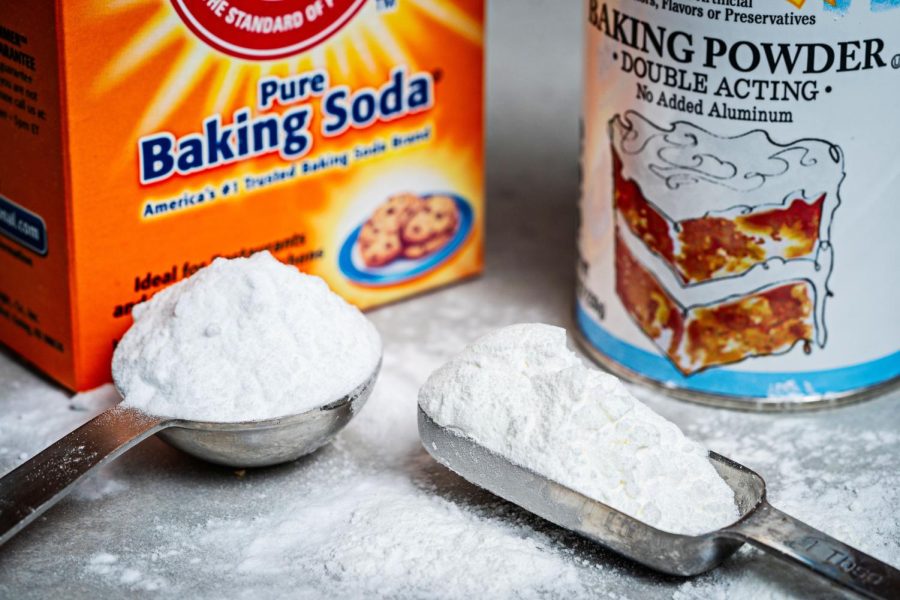Baking Soda vs. Baking powder
February 15, 2022
You look at a new recipe online: it calls for two teaspoons of baking soda. You have baking powder but not baking soda: can you use one in place of the other? The answer is no, but why? The chemical makeup of baking soda and baking powder are very similar, however, their processes are very different.
In order to make your cakes and cookies rise, both baking soda and baking powder create carbon dioxide (CO2) bubbles. The batter hardens and the CO2 is “sealed,” causing the treats to rise and sometimes spread out. Both components also require heat and moisture to further activate the sodium bicarbonate.
Baking soda is pure sodium bicarbonate, meaning that in order for it to create CO2, it needs to be combined with an acid such as buttermilk, yogurt, or lemon juice. Baking Powder, however, is made up of both sodium bicarbonate and powdered acid (such as cream of tartar).
Now, some recipes, you may see, use both baking soda and powder. But why? Don’t they do the same thing? Once again, the answer is no. Although the process is the same, they do different things. For example, baking soda browns foods better than baking powder. The recipes that call for both are often acidic and “tangy” foods. If baking soda were the only thing that was used, it would neutralize the acids in the food, causing it to lose its tang. So to fix this, you add baking powder in as well in order to give the baking soda extra acid to bond to, and less baking soda in order to preserve the acidic flavors of the food you are making.






Dion meyer • Apr 14, 2022 at 5:51 pm
Very informative.